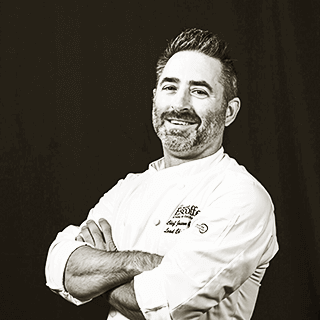Listen to This Article:
You may not have thought of it this way before, but a menu is arguably the heart and soul of any restaurant. Yes, it’s a physical (or digital) list of what a customer can order and enjoy, and may be the primary draw for the public. But a menu also represents what it costs a restaurant to prepare and provide those items. This makes it a primary source of your income.
If you want to have a profitable restaurant business, menu pricing is a key skill you may need to hone. To keep your restaurant afloat, it’s essential to price your menu items properly so your costs are covered, and you actually make a profit.
Food Costs: The Economics of Menu Pricing
There are many ways to approach your menu pricing, but most restaurants use what’s called a “food cost percentage” to determine how much they should charge for their menu items.
Most establishments have a food cost percentage goal of 30% or less. This ratio leaves income left over to pay cooks and waitstaff, rent, utilities, and other business expenses and leaves room for profit. There are two ways to determine your food cost percentage: based on inventory or by the dish. Here’s how to do those calculations.
Calculating Food Cost Percentage Based on Inventory
How to Calculate Food Cost Percentage Using Inventory
| (Initial Inventory + New Purchases – Leftover Inventory) Total Sales |
x 100 = Food Cost Percentage |
|---|
To assess your restaurant’s current food cost percentage, select a time period to measure, such as the previous week. Add the value of your current inventory (the value of all the ingredients you have on hand) to any new ingredient purchases during that week. At the end of the week, add up the total value of your leftover inventory (the value of all leftover ingredients after preparing food for the week). Subtract this amount from your starting inventory and new purchases for the week. Then divide these inventory costs by your income during that time and multiply by 100. This tells you what percentage of your income is being spent on ingredients.
Using this inventory method helps you assess the overall success of your menu pricing strategy. If you find that your food cost percentage is higher than you’d like, it may be time to adjust the pricing of some of your menu items to make sure they’re in your target range.
Keeping your food cost percentage to 30% or less zone helps maintain your potential for profitability.
Calculating Food Cost Percentage Per Dish
You can also determine the food cost percentage of individual dishes on your menu to make sure that your menu items are close to ideal.
How to Calculate the Food Cost Percentage of a Dish
- List every ingredient in the dish.
- Calculate the cost of each ingredient.
- Add together the cost of all the ingredients.
- Divide the item’s cost by the amount you charge on the menu, and multiply by 100.
| Cost of Ingredients Menu price |
x 100 = Food Cost Percentage of a Menu Item |
|---|
Your food cost percentage won’t be the same for every menu item, nor will all of them be under the target. It’s ok to offer a mix of dishes at several percentage points as long as the overall average is profitable.
Other Strategies to Create Profitable Menu Pricing
Using the food cost percentage isn’t the only method to develop your menu pricing. You can use other pricing options on their own, or combine food cost percentage with these other pricing strategies to help your menu be profitable:
Customer Demand
Consider how much customers are willing to pay for an item and price your menu accordingly. This can be affected by the uniqueness or quality of your restaurant offerings. For example, if your restaurant serves a totally unique, local specialty using high-quality ingredients, your patrons may be willing to splurge for the novelty.
Charm Pricing and Pricing Psychology
A variety of factors affect how much customers are willing to pay for your menu items. Pricing your menu items to appeal to your customers’ desire for a deal can help improve your bottom line. Restaurant patrons may be willing to pay more for creative dishes with premium flavors, or if there is a lot of buzz around your restaurant. In other cases, special deals like Happy Hour pricing, or bundles and combo meals that combine standard dishes with items that have a low food cost percentage may drive sales and profits as well.
Even something as simple as the specific numbers you use can influence customer choices. For example, ending your prices in .99 or .95 sells items better than round numbers, so consider using this strategy. It makes the menu item appear cheaper than it would with whole-dollar pricing.
Other charm pricing strategies include bundles or combo meals. A common example of this strategy is serving a burger with fries and a drink for a combination price.
Special Pricing
Use offers such as happy hour pricing, seasonal deals, or specials to increase interest in your restaurant and bring patrons in the door. Creating these specials drives customer interest in your menu items because it feels like a limited, time-sensitive resource.
Analyze Your Competitors’ Menu Pricing
The economics of a city or region will influence what people are willing to pay for on your menu. People in Beverly Hills are likely looking to spend a different amount than people living in Topeka, Kansas. It can be informative to research restaurants similar to yours in your market area to compare. The range of restaurants and their menu offerings can give you helpful clues to further refine your menu pricing.
For example, what kind of dining establishment are you offering (casual or fancy), and what are other restaurants in your niche charging for similar dishes to yours? If you have the budget, consider sampling menu items at these similar establishments to compare how your version of the same dishes is similar or different.
Asking these questions gives you a ballpark idea of what your local market will bear. For example, if you’re planning to sell hamburgers, and current local prices vary from $9 to $15, you can estimate that your price should likely fall somewhere in between, as long as you can meet the appropriate food cost percentage.
Consider Pricing Dynamics
Your ingredient and overhead costs may vary throughout the year. For example, seasonal fruits or vegetables may cost more in the off-season, and your restaurant’s bills may increase in the winter due to heating costs.
Your location may also influence the ingredients costs you will need to pay to suppliers. For example, if you’re trying to buy seafood in Salt Lake City, chances are you will pay more for those ingredients than if you lived in Boston. Factoring these costs into your menu pricing and planning helps keep your profit margins healthy throughout the year.
Your restaurant may use a combination of these methods to arrive at pricing that covers your costs and that keeps you competitive in your market.
The Right Menu Offerings Leads to Healthy Profits
As with many of life’s endeavors, good results come from good planning. Deciding which kinds of dishes to include on your menu and how you will present them is important for your restaurant’s bottom line. For example, will you plan a luxury, white tablecloth business with high-end filet mignon and lobster, or a budget, fast-food lunch cafe serving burgers and fries?
The economics for the range of these options is different and may require different pricing strategies. Here are a few things to keep in mind as you create your menu to help ensure profitability.
Menu Complexity Can Increase Costs and Decrease Sales
How varied and complex will your restaurant’s menu be? Will you offer dozens of dishes, as is common in many Chinese or Mexican restaurants, or a few staple items with a short list of side orders?
It’s important to realize that more complex menus will be more difficult to price for profitability because there are so many variables. Make sure that if you are choosing to offer a more complex menu, you are factoring in how to account for these variables. For example, a lengthy menu will influence how often a patron will order any one particular dish. How will you prevent ingredient waste from spoilage if a menu item only gets ordered twice a month? How will you prevent customers from feeling overwhelmed while ordering? Work to find the balance between offering what you’re excited about and what will best drive profitable sales.
Standardize Your Side Orders
Offering the same inexpensive side dishes with a range of entrees can help keep costs down. For example, if your restaurant offers entrees like steak, poultry, pork roast, and fish, serving all of them with an inexpensive, standard side order like rice pilaf simplifies your costs and your workflow. If you were to offer a unique side dish with each entree, you would have to keep a greater variety of perishable items on hand and increase your prep complexity. In this way, simplifying your side dish offerings can help keep your menu profitable.
Dress Up Your Low-Cost Ingredients
Doing interesting and unique things with low-cost ingredients like rice, tortillas, dried beans, onions, or potatoes is a way to increase your bottom line. For example, plain rice is rather inexpensive (and boring as a side dish), but you can dress it up without too much extra cost by using some inexpensive, bulk-purchased seasonings and create an exceptional side dish out of it. Why not turn that plain rice into a delicious rice salad tossed with some olive oil and vinegar, a little fresh-pressed garlic, and some fresh chopped basil? This variation wouldn’t cost very much to make but creates a showy, unique side dish your customers will love that has a healthy food cost percentage.

Planning out your menu strategy can increase the likelihood that your restaurant will make a profit.
Keep Your Menu Profitable Over Time
Once you’ve made changes to your menu prices, or you’ve been in business for a little while, make sure to continue evaluating your costs to keep your prices working out how you intended.
It’s important to periodically review the food cost percentage of your various dishes. For example, if the price of an ingredient goes up significantly, you may need to adjust your prices to continue to stay profitable. Plan on a pricing review at least once or twice a year, quarterly if you rely on seasonal items.

Periodically auditing your ingredient costs and income is essential to keep your restaurant profitable.
Here are a few additional tips to help you manage costs and stay profitable:
Standardize your Recipes and Portion Sizes
Having standardized recipes not only helps you plan and purchase ingredients more effectively but having standardized portion sizes makes sure that you’re not inadvertently losing money. For example, if your standard recipe batch of spaghetti with meat sauce includes ten servings, but you overserve and only get nine servings, you’ve just missed out on an extra sale. Keeping your batch sizes and portions consistent helps you control your costs. It also makes it easier to track down where a food cost percentage overrun is happening.
Minimize Waste
Wasted ingredients translate to wasted money and decreased profits. Make sure your ordering and procurement processes match what your restaurant needs and that food is stored properly to minimize spoilage so you’re not throwing money away.
Shop Around for Ingredients
Saving money on ingredients can increase your bottom line. Do make sure that the quality matches your customary standards, though.
Shop Seasonally
Consider shaping your menu around seasonal options. Choosing produce, seafood, or specialty items that are in season is often cheaper than buying them when they need to be shipped long distances during the off-season. This can also be a draw for customers.
Take Your Menu Pricing Skills to the Next Level
There’s no doubt that mindful menu pricing helps your restaurant succeed in the marketplace. Menu pricing and restaurant business skills are just some of the many topics Auguste Escoffier School of Culinary Arts offers aspiring chefs and restaurateurs.
In Escoffier’s Culinary Arts Program, Pastry Arts Program, and Food Entrepreneurship Program, training and mentoring on the art and science of running a restaurant is typically a part of the curriculum. For example, a Menu Design and Management course is included to help aspiring chefs create profitable menus.
Are you curious about how culinary school could support you in starting or improving your current restaurant? Contact Escoffier today to discuss the next step on your chef’s journey.
IF YOU LIKED THIS ARTICLE EXPLORING THE ECONOMICS OF MENU PLANNING, CONSIDER READING THESE ARTICLES NEXT.
- How to Start a Restaurant: A Step-By-Step Guide
- How to Create a Great Beverage Menu
- Restaurant Marketing 101: An Essential Guide
*Information may not reflect every student’s experience. Results and outcomes may be based on several factors, such as geographical region or previous experience.


